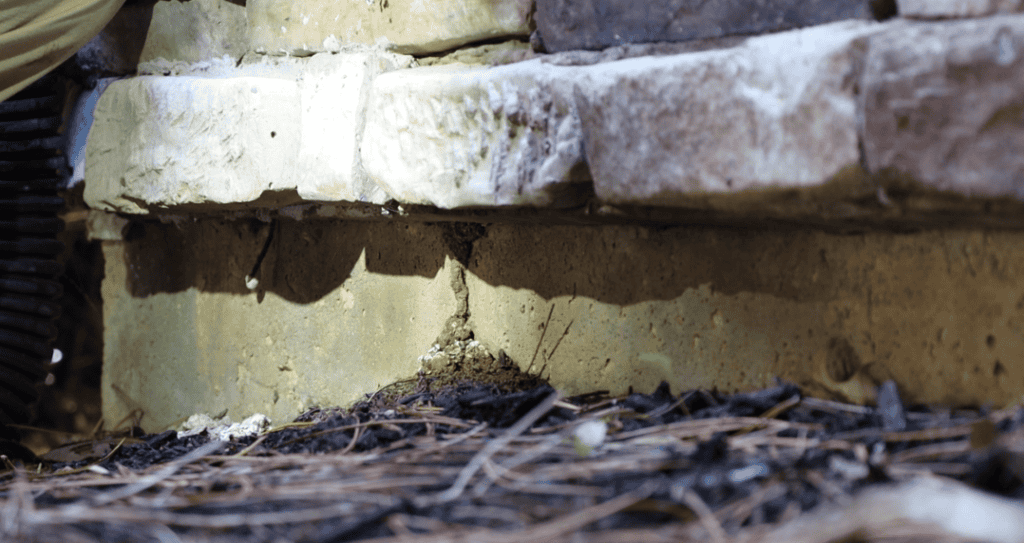Home Termite Treatment
You’re cleaning your kitchen or checking a window sill when you notice a trail of small insects. At first glance, they might look like harmless ants — but what if they’re termites? Both pests are common across the Midwest, especially in the Kansas City area, and can look surprisingly similar, particularly when they swarm during warmer months. The difference between the two, however, can mean the difference between a simple annoyance and thousands of dollars in structural damage. Knowing how to tell them apart is the first step in protecting your home.
At a glance, ants and termites seem nearly identical in size and color. Both have six legs, two antennae, and a segmented body, and both can be found near wood or moisture. But when you look closer, you’ll notice a few distinct features. Ants have narrow, defined “waists” between their thorax and abdomen, giving them that classic hourglass shape. Termites have a straight, uniform body with no pinched middle. Their antennae are straight, while an ant’s antennae are bent or elbowed. These small physical differences can help homeowners make an initial ID before calling a professional for confirmation.
Winged ants and winged termites — often called “swarmers” — can be especially tricky to tell apart. These flying versions appear as both species mature and begin searching for new places to build colonies. Termite swarmers are usually a serious warning sign, indicating an established colony is already active in or near your home. Their two pairs of wings are equal in length and extend well past their body. The wings are delicate and shed easily, so if you find piles of small, clear wings around windowsills, basements, or door frames, you may have termites. Ant swarmers, however, have front wings that are noticeably longer than the back pair, and their bodies are darker and more segmented.
The biggest difference, though, lies in behavior and damage. Ants are scavengers. They travel in visible lines, move quickly, and seek out crumbs, grease, and sugary food. You’ll often find them around kitchens, pantries, or pet food areas. They can be a nuisance but rarely cause long-term harm. Termites, on the other hand, are silent destroyers. They don’t come out in the open or look for visible food — your home is their food source. They feed on cellulose, a material found in wood, drywall, and paper, eating from the inside out. This hidden feeding can go unnoticed for years, leading to costly structural damage before any signs become visible.
One of the clearest termite warning signs is the presence of mud tubes. These pencil-sized tunnels run along foundations, walls, or crawl spaces and serve as protected highways for termites traveling between their underground nest and your home. They need moisture to survive, and mud tubes help them stay sheltered from air and light. Ants don’t build these tunnels; instead, they move freely above ground and can often be seen foraging in the open. If you find mud tubes, hollow-sounding wood, or blistered paint, termites are likely the culprit.
Here in the Kansas City area, subterranean termites are the most common type. They live in soil and enter homes through small cracks in foundations, plumbing penetrations, or expansion joints. Once inside, they quietly feed on wooden supports, flooring, and framing. Carpenter ants, while also associated with wood, behave differently. They don’t eat wood — they excavate it to create nesting galleries. While the damage from carpenter ants can still be significant, it’s usually more localized than termite destruction. Still, both pests can weaken your home’s structure if ignored.
If you’ve spotted suspicious insects or signs of damage, resist the urge to use over-the-counter sprays. Store-bought treatments might kill a few visible insects but won’t eliminate the colony hidden deep within your walls or underground. In fact, some DIY sprays can cause colonies to split and spread, making the problem worse. Professional inspection and treatment are the only reliable ways to determine what you’re dealing with and stop it at the source. Pest control technicians use specialized tools and knowledge to identify the pest, locate the nest, and assess the extent of damage.
When termites are confirmed, professional treatment might include liquid barrier applications that target colonies directly. For ants, treatment usually involves baiting and exclusion — eliminating nests, sealing entry points, and removing attractants. Both approaches are customized to the pest type, the level of activity, and the home’s layout.
Preventing future infestations starts with addressing what attracts these pests in the first place. Termites thrive in damp environments, so keeping your home’s foundation dry is key. Fix any leaky faucets, make sure gutters and downspouts direct water away from the house, and avoid storing firewood or mulch directly against exterior walls. For ants, cleanliness is your best defense — wipe up food spills, store pantry items in sealed containers, and take out trash regularly. Sealing cracks and crevices around windows, doors, and foundations also helps block their entry.
Even if you’ve never seen termites, scheduling a yearly termite inspection is one of the smartest investments you can make as a homeowner. Termite damage isn’t usually covered by homeowners insurance, so early detection can save thousands in repair costs. Many pest control companies also offer termite monitoring systems that provide ongoing protection and peace of mind. Regular inspections keep your home protected year-round — especially in areas where termite activity is common.
If you’ve found winged insects indoors, piles of discarded wings, or mysterious wood damage that seems to appear overnight, don’t wait to find out which pest is responsible. Whether it’s ants invading your kitchen or termites eating away at your foundation, professional pest control makes all the difference. Acting early means less damage, fewer headaches, and a stronger, safer home for years to come.
Your home is your biggest investment — make sure it’s protected. Contact Pete’s Pest Control today for a thorough inspection and professional pest identification. Whether it’s ants or termites, our team will find the source, eliminate the problem, and keep your home pest-free all year long.


